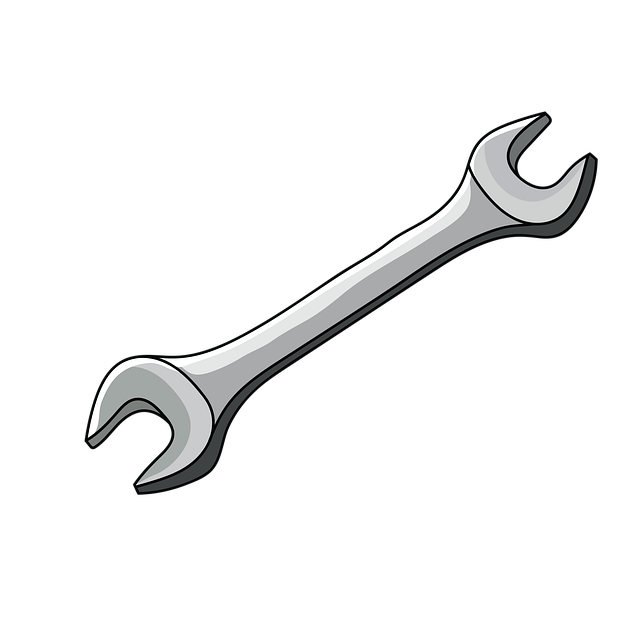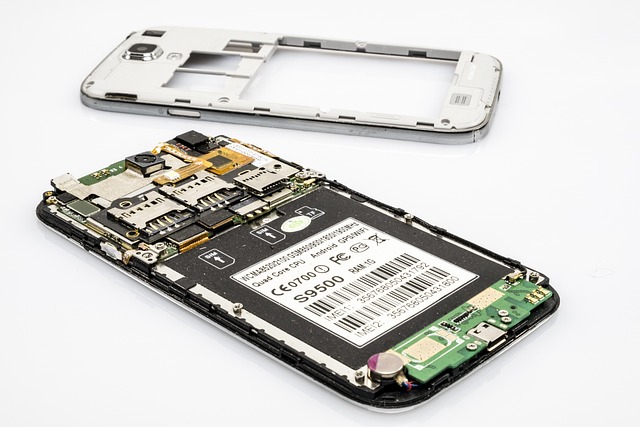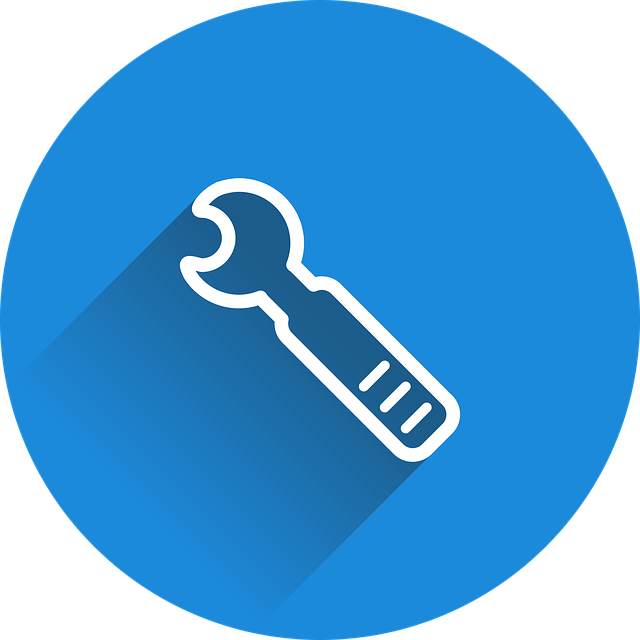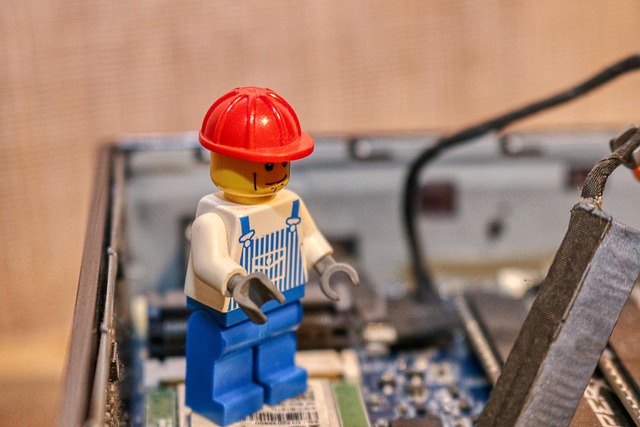Before troubleshooting, check power supply and connections for electrical issues. Set thermostat correctly and verify Wi-Fi connection for smart models. Inspect temperature sensor placement and keep it clean. Test and replace thermostat battery for consistent performance. Update firmware to fix software-related problems. Consider thermostat replacement if basic troubleshooting fails. Consult a thermostat repair expert for complex issues or guidance.
Struggling with a thermostat that’s not heating your home? Don’t panic! This comprehensive guide, crafted by a thermostat repair expert, offers step-by-step troubleshooting for common issues. From power supply checks and verifying settings to inspecting sensors and even testing battery backup, each section ensures you tackle the problem effectively. By following these precise instructions, you’ll be back on track to enjoying a cozy home environment in no time.
- Check Power Supply and Connections
- Verify Thermostat Settings and Mode
- Inspect Temperature Sensor and Position
- Test Battery Backup (if applicable)
- Update Firmware or Reset Device
- Replace Thermostat if Necessary
Check Power Supply and Connections

Before attributing the issue to the thermostat itself, it’s crucial to verify the power supply and connections. A simple reset or re-establishment of power can often solve underlying issues that prevent your heating system from functioning correctly. Start by ensuring that the main circuit breaker is in the ‘on’ position and that there are no blown fuses indicating a problem with electricity flow to the thermostat. Check for loose or damaged wires connected to the device, as these can disrupt communication between your heating system and the thermostat repair expert’s settings.
If you’re dealing with a complex thermostat wiring diagram for dummies, it may be helpful to consult a detailed guide or reach out to a professional. While some basic thermostats only require simple plug-in connections, more advanced models might have intricate wiring that demands precision during installation and maintenance. Remember, incorrect wiring could lead to inefficient heating or even damage to your system, so taking the time to confirm proper power supply is an essential step in troubleshooting.
Verify Thermostat Settings and Mode

The first step in troubleshooting a thermostat that’s not heating your house is to verify its settings and mode. As a thermostat repair expert, I’ve seen many homeowners overlook this simple yet crucial check. Ensure the thermostat is set to “Heat” rather than “Cool” if your system is designed for heating only. Moreover, confirm that the desired temperature is set correctly and that the fan mode is set to “Auto.” If you’re dealing with a smart thermostat, make sure it’s connected to your home’s Wi-Fi network and that its learning programs are properly configured.
A common issue, especially in older thermostats, is when the unit fails to adjust the temperature as instructed. This could be due to faulty wiring or a damaged heating control board. If you suspect this is the case, it might be best to consult with a professional thermostat repair expert who can diagnose and resolve the problem effectively. Remember that a well-maintained thermostat is key to keeping your home comfortable during colder months, so regular checks and adjustments are essential.
Inspect Temperature Sensor and Position

When troubleshooting why your house isn’t heating up properly, one oft-overlooked step is inspecting the temperature sensor and its position. As a thermostat repair expert, I’ve seen many cases where an improperly placed or contaminated sensor can misread temperatures, leading to inefficient heating. The sensor is responsible for detecting the ambient temperature in the room, so it’s crucial to ensure it’s clean, unobstructed, and located in a representative area of your home. A common issue is when the sensor is covered by furniture or positioned too close to a heat source, which can skew readings.
For energy efficient thermostat recommendations, consider a smart home thermostat setup that can learn your heating patterns. These advanced thermostats not only help you save on energy bills but also offer remote control and programming options through smartphone apps. Remember, how often should you replace a thermostat depends on the model and usage; while most last 5-10 years, it’s wise to inspect them annually and consider replacement if they show signs of malfunction or are outdated.
Test Battery Backup (if applicable)

If your house isn’t warming up as expected, testing the battery backup (if applicable) on your thermostat is a crucial step in troubleshooting. As a thermostat repair expert, I often find that a simple battery replacement can resolve common heating issues. Ensure you follow the manufacturer’s instructions carefully to avoid any potential hazards.
Remember that optimal thermostat performance heavily relies on its placement. For instance, placing it near windows or doors can cause it to read incorrect temperatures due to drafts. The ideal location is usually in a central area of your home, away from direct sunlight and drafts. If you suspect thermostat sensor issues, consider consulting an emergency plumber Bromsgrove for professional assistance.
Update Firmware or Reset Device

If your thermostat isn’t heating your house as expected, one simple step you can take is to update its firmware or reset it. Many modern thermostats, especially those that are Wi-Fi enabled, come with regular software updates that improve their performance and compatibility with HVAC systems. Checking for and installing these updates could resolve issues related to incorrect temperature readings or inefficient heating control.
For a thermostat repair expert, ensuring the device’s firmware is up-to-date is often a quick fix that can be done in minutes. If updating doesn’t help, resetting your thermostat to its factory settings might be necessary. Before doing so, however, verify the thermostat’s compatibility with your HVAC system, as improper reset could lead to further complications. For instance, if you’re not sure about the process or encounter challenges during Wi-Fi thermostat installation instructions, consult a professional for guidance.
Replace Thermostat if Necessary

If your house isn’t warming up as expected, even after adjusting the settings, it might be time to consider replacing your thermostat. While many issues can be resolved with simple troubleshooting techniques, such as checking battery life or cleaning the unit, a faulty thermostat could be at the root of persistent heating problems. A thermostat repair expert will have the knowledge and tools to diagnose complex issues, but if you’re handy with tools and comfortable working with electrical components, replacing the thermostat might be an option you can explore without calling a professional.
Before making a decision, compare your current thermostat’s functionality with a new model. You may find that the latest thermostats offer advanced features like smart connectivity, energy-saving programs, or enhanced accuracy, which could warrant an upgrade. However, if your current unit is relatively new and shows no signs of malfunction, it might be best to follow the thermostat installation best practices and ensure proper wiring according to the included thermostat wiring diagram for dummies before making any decisions.
If your house isn’t heating up as it should, don’t panic. As a thermostat repair expert, we’ve guided you through a series of troubleshooting steps to identify and resolve common issues. From checking power supply and connections to updating firmware or even replacing the device, these solutions can help get your home’s heating back on track. With a bit of patience and these expert tips, you’ll be enjoying a cozy environment in no time.
